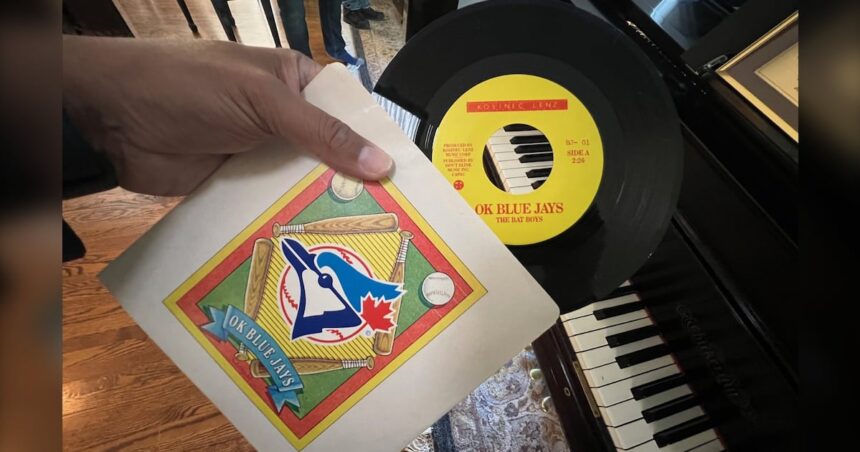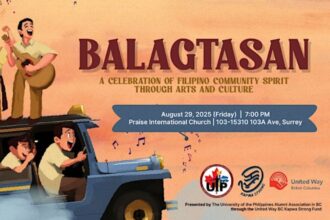There’s a moment during every Blue Jays home game that transcends the sport itself—a ritual so embedded in Toronto baseball culture that it feels as fundamental as the seventh-inning stretch. When the opening notes of “OK Blue Jays” echo through the Rogers Centre, something magical happens: 50,000 fans rise as one, performing synchronized arm movements with the enthusiasm of participants in the world’s largest aerobics class.
But how did this catchy jingle evolve from a simple promotional tool into one of baseball’s most recognizable anthems? The story behind this Toronto institution offers a fascinating glimpse into how sports, music, and civic identity can intertwine to create something truly distinctive.
The song’s origins date back to 1983, when the Blue Jays were still finding their footing as an expansion team. The marketing department sought something that would energize the crowd at Exhibition Stadium (the team’s home before the SkyDome/Rogers Centre). They commissioned composers Jack Lenz and Tony Kosinec, who created what they likely thought would be a short-lived promotional jingle.
“We had no idea it would become what it has,” Lenz told me during an interview last season. “It was supposed to be a one-season wonder, maybe two if we were lucky. Four decades later, I still get calls about it.“
The genius of the song lies in its participatory nature. Unlike passive team anthems that fans merely listen to, “OK Blue Jays” was designed with accompanying movements—clapping, stretching, and synchronized arm gestures that create a shared experience among thousands of strangers. This interactive element transformed what could have been just another forgettable sports jingle into a communal ritual.
The timing proved perfect. The Blue Jays were ascending as a franchise, building toward their glory years that would culminate in back-to-back World Series championships in 1992 and 1993. As the team improved, the song became increasingly associated with success, embedding itself deeper into the fan experience with each passing season.
What’s particularly fascinating about the “OK Blue Jays” phenomenon is how it has bridged generations. Parents who jumped to their feet for the song in the 1980s now watch their children and grandchildren perform the same movements four decades later. In an era where attention spans have shortened and traditions often fade, this musical interlude has remained remarkably resilient.
“It’s become a sort of intergenerational glue,” says Samantha Wright, a cultural anthropologist who studies sports rituals at Ryerson University. “In my research, I’ve interviewed three generations of families who all share this common touchpoint. The grandmother remembers doing it at Exhibition Stadium, the parents during the World Series years, and now the kids are learning the same movements at today’s games.“
The lyrics themselves reflect a simpler time in sports entertainment. Lines like “Let’s play ball, it’s game day” and the call to “root, root, root for the home team” feel charmingly direct compared to today’s sophisticated marketing campaigns. Perhaps that straightforwardness is part of its enduring appeal—a reminder of baseball’s pastoral roots amid the high-tech spectacle of modern sports.
The song has also proven remarkably adaptable. When the Blue Jays fell into competitive decline in the early 2000s, “OK Blue Jays” remained a bright spot during otherwise forgettable seasons. During the pandemic-affected 2020 and 2021 seasons, when the team temporarily relocated to Buffalo and later Dunedin, Florida, the song traveled with them—a piece of Toronto extending into foreign ballparks.
There have been attempts to refresh the song over the years—most notably in 2003 when a remixed version was introduced—but fan backlash quickly resulted in a return to the original. Some traditions, it seems, are best left untouched.
What makes certain rituals stick while others fade away? Looking at similar traditions across North American sports, few musical traditions have maintained such longevity. The Chicago Cubs’ “Go Cubs Go” and Boston’s “Sweet Caroline” come close, but “OK Blue Jays” predates both.
As Toronto continues to evolve as one of North America’s most diverse cities, the song serves as a rare constant—something shared across cultural backgrounds, ages, and even casual versus die-hard fan status. You don’t need to understand the infield fly rule to clap your hands and stretch to the right.
The next time you find yourself at a Blue Jays game, take a moment during the seventh-inning stretch to look around as thousands of fans perform those familiar movements in unison. You’re witnessing something more significant than just a catchy song—you’re participating in a living piece of Toronto’s cultural heritage, a tradition that has outlasted stadium names, player careers, and even championship eras.
In a sports world increasingly dominated by transient players and corporate rebranding, “OK Blue Jays” stands as a reminder that sometimes the most enduring aspects of fandom are the simplest: a catchy tune, some easy-to-follow movements, and the joy of participating in something larger than yourself.
For more insights on Canadian cultural phenomena, visit our CO24 Culture section, or check out other sports traditions in our CO24 Trends collection.














